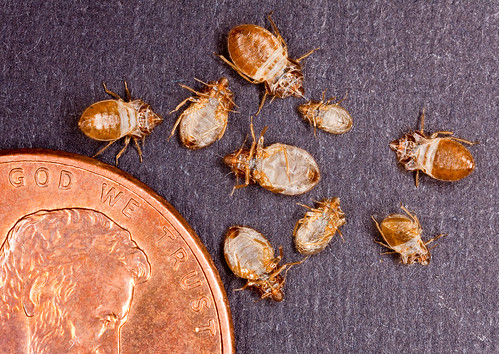
This post is part of the Science Tuesday feature series on the USDA blog. Check back each week as we showcase stories and news from USDA's rich science and research profile.
Most likely you’ve heard the old saying about “sleep tight and don’t let the bed bugs bite.” The “sleep tight” part relates to old-fashioned beds in which the bedding was suspended on cords pulled tight to provide a firmer sleeping surface, but you probably don’t need any extra explanation for “don’t let the bed bugs bite”!
That saying might have been most Americans’ only knowledge of bed bugs until a decade or so ago, when the bed bug population came roaring back to infest workplaces, hotel rooms, and even our apartments and houses. That’s why scientists with the U.S. Department of Agriculture’s Agricultural Research Service (ARS) have been working hard on finding ways to fight these tiny-but-terrible pests.
Bloodsucking bed bugs, while dirty and disgusting, don’t appear to transmit disease, but they can cause severe allergic reactions in some people. Since the bugs are so small, they can be difficult to detect until their population is fairly large, and it can be costly to get rid of them.
The ARS scientists say one strategy for combating these creatures could be turning their own chemistry against them. In recent studies, the scientists identified two new “alarm pheromones” that the bugs emit when they’re frightened, to tell other bed bugs to flee.
While breaking up a bed bug party sounds like a great idea under any circumstances, the scientists say causing the bugs to scatter increases the likelihood that the pests will run across an insecticide or other control agent.
The ARS scientists and a university colleague have used a technique called mass spectrometry to identify 17 compounds called “cuticular hydrocarbons,” associated with the outer protective layer of the bug. These compounds could play a role in the beg bugs’ habit of banding together.
The scientists say these cuticular compounds and the alarm pheromones might help dogs detect bed bugs. Canine detection of bed bug infestations is an emerging industry, and a better understanding of the chemical basis of canine detection could contribute to a harmonization of training and detection methods—and give dogs yet another chance to live up to their reputation as “man’s best friend”!


